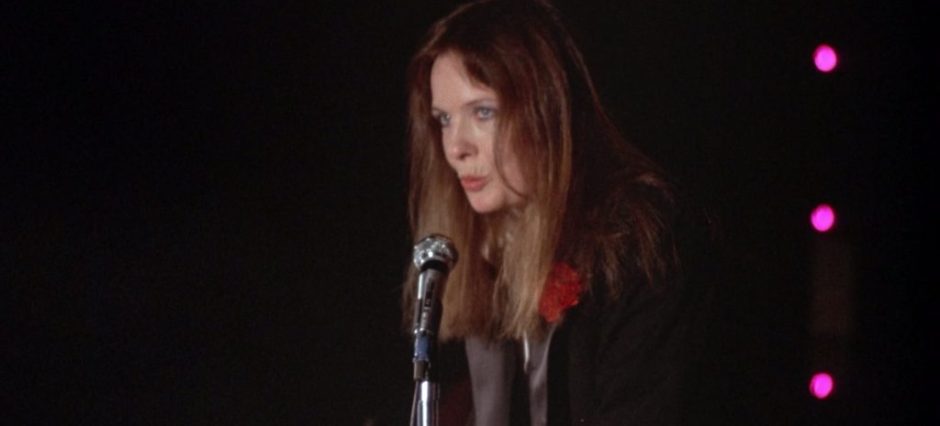I am interested in the idea of ‘critical art’,[1] especially in relation to why an individual might want to attend an art school. Martha Rosler’s Culture Class, discusses whether political and socio-critical art can survive in an overheated market environment — questioning whether choosing to be an artist means aspiring to serve the rich [as the dominant economic model].[2] Following on from David Lloyd’s proposition that through its compensatory[3] qualities, the aesthetic sphere naturalises forms of life lived under the rule of property,[4] Larne Abse Gogarty writes:
I am preoccupied by the relationship between liberalism, aesthetics, and processes of racialization and domination […] What kind of art can work against this? Can art exist as a conspiracy capable of corroding that rule? [5]
Would this corrosion be equivalent to the power of being able to disappear, loudly?[6]
Christine Sum Kim is an artist who identifies as a deaf person, and as a cisgender mother, who is American, German, and has Korean parents.[7] She states:
I’m always a little bit jealous of artists who have the privilege to be misunderstood. For me, I automatically feel like I need to explain what things mean. […] I think that stems from a place of how misunderstandings can affect my rights […] navigating access, education, employment, family… [8]
Here, Kim suggests that with non-marginalised selfhood comes opportunity towards fearlessness, whilst positioning herself outwardly amongst the mechanisms of exploitation and domination that the neo-liberal debtor-creditor relationship requires of the oppressed.[9] Kim’s intersectional identity has a direct impact on her intentionality in visibility and the scale of her work.[10]
I am interested in the responsibility and potential de-humanisation put upon an artist who is ‘critical’. Again, from Culture Class:
Categories of criticality have evolved over time, but their taxonomic history is short. The naming process is itself frequently a method of recuperation, importing expressions of critique into the system being criticised, freezing [things] into academic formulas[11]
In Kimberlé Crenshaw’s theory of intersectionality, the idea of supplementing dominant (or institutional) criticality is challenged, and instead a reconstruction of what it means to be free, or socially empowered, is the desired outcome:
Implicit in certain strands of feminist and racial liberation movements is the view that the power in delineating difference need not be the power of domination; instead [it can] be the source of social empowerment and reconstruction[12]
In an undergraduate design course, academics are often asked to write course content that is geared towards employability, or [perhaps more pertinently] ‘industry expectations’. These expectations are rarely geared towards design as a tool for understanding selfhood (or indeed, the cultural landscape) that is not in direct relation to positionality in capital, or neo-liberal society.
What makes people disabled is not their disability […] it’s society. Society is what holds us back. It’s that systemic discrimination and oppression.[13]
I wonder if this particular framework re-affirms dominant social categorisation, neglecting the possibility that a design student might in fact wish to utilise ‘critical art’ to better understand and empower themselves intellectually, or socially, outside of the expectations of industry — offering choice, and the potentiality of re-construction. A refusal of the words “here I am”, that instead asks the question: by ‘being nowhere’, where are we [now] who get to / are called to / must speak?[14]
[1] Following Richard Noble and Chantal Mouffe we can distinguish four distinct ways of making critical art:
1. There is the kind of work that more or less directly engages critically with political reality.
2. Artworks exploring subject positions or identities defined by otherness, marginality, oppression, or victimization (this has been the dominant mode of making critical art in recent years: feminist art, queer art, art made by ethnic or religious minorities).
3. The type of critical art which investigates its own political condition of production and circulation.
4. Art as utopian experimentation, attempts to imagine alternative ways of living: societies or communities built around values in opposition to the ethos of late capitalism.
Noble, Richard (2003/2004) Some Provisional Remarks on Art and Politics, The Showroom Annual and Mouffe, Chantal (2008) Art and Democracy: Art as an Agnostic Intervention in Public Space, Open 2008 / No.14 / Art as a Public Issue, p.11-12. Available at: https://readingpublicimage.wordpress.com/wp-content/uploads/2012/04/mouffe_open14_p6-151.pdf (Accessed: 24 July 2024)
[2] Rosler, Martha (2013) Culture Class, e-flux journal, Sternberg Press, p.31
[3] Here ‘compensatory’ is to be understood in the form of economic return
[4] Lloyd, David (1990) Analogies of the aesthetic: the politics of culture and the limits of materialist aesthetics, New Formations
[5] Abse Gogarty, Larne (2023) ‘Introduction’, What We Do Is Secret: Contemporary Art and the Antinomies of Conspiracy, Sternberg Press, p.22
[6] Darling, Brett (2018) The Pluralist: The Visibility Issue, the Royal College of Art Newspaper
[7] Art21 (2023) Christine Sun Kim in Friends & Strangers – Season 11 | Art21. 16 October 2020. Available at: https://www.youtube.com/watch?v=2NpRaEDlLsI (Accessed: 23 July 2024)
[8] Ibid.
[9] Lazzarato, Maurizio (2011) The Making of the Indebted Man: An Essay on the Neoliberal Condition, Semiotext(e)
[10] Kim states that “scale = visibility — and that has the ability to shape social norms”. Art21 (2023). Christine Sun Kim in Friends & Strangers – Season 11 | Art21. 16 October 2020. Available at: https://www.youtube.com/watch?v=2NpRaEDlLsI (Accessed: 23 July 2024)
[11] Rosler, Matha (2013) Culture Class, e-flux journal, Sternberg Press, p.30
[12] Crenshaw, Kimberlé (1990) Mapping the Margins: Intersectionality, Identity Politics, and Violence against Women of Color. Stanford Law Review43 (6), p.1242
[13] Adepitan, Ade for Parapride (2023) Intersectionality in Focus: Empowering Voices during UK Disability History Month 2023. Available at: https://www.youtube.com/watch?v=_yID8_s5tjc&t=1s
(Accessed: 23 July 2024)
[14] Darling, Brett (2018) The Pluralist: The Visibility Issue, the Royal College of Art Newspaper

